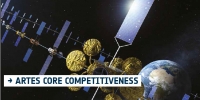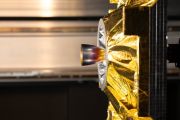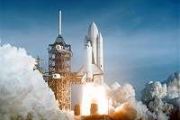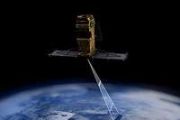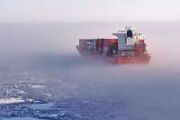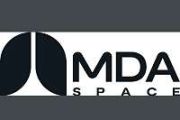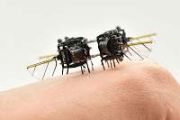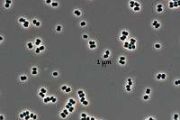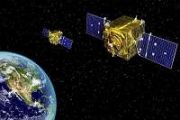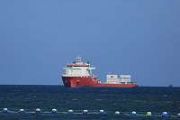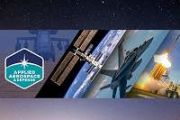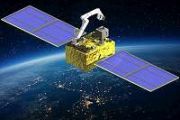ARTES is ESA's (European Space Agency) long-running, large-scale program to support the development of advanced satcom products and services. The ARTES program facilitates research and development activities as well as providing a framework for partnerships within the industry with goal of contributing to the development of European and Canadian industries. It assists them in the development of advanced technologies and concepts that form the basis for competitive products and services.
Satellite communications is the economic engine of the space industry, accounting for two thirds of overall space industry revenue. Worldwide data traffic is estimated to grow 800% by 2019, making broadband and data communications services leading growth segments. ESA’s Directorate of Telecommunications and Integrated Applications (TIA) keeps European and Canadian industry at the leading edge of this fiercely competitive global market by nurturing innovation. 1) 2) 3) 4)
Through ESA’s support, industry can pursue research and development that would otherwise not be economically viable. Growing new space-enabled applications and services stimulates the wider economy, creating new business and jobs across almost every sector.
Services using space capabilities benefit society on a daily basis and on a global and local scale, such as monitoring natural resources and the environment, improving education in rural areas, assisting search and rescue, and providing remote healthcare.
ESA’s ARTES program transforms R&D investment into successful commercial products and services by offering varying degrees of support to projects with different levels of operational and commercial maturity.
ARTES has three branches:
• Business Applications develops everyday applications and services that use satcoms technology to improve existing solutions or fill the gap left by terrestrial ones.
• Support and development of new or next-generation satcom products and technologies up to their first flight opportunity is part of ARTES Core Competitiveness.
• ESA's PPPs (Public–Private Partnerships) with satellite operators and manufacturers, supports co-funding to share the risk that comes with investing in new technologies. This accelerates their introduction to the market, keeping Europe ahead in satcoms.
ESA’s Telecommunications and Integrated Applications also works alongside other public entities such as the European Union, Eurocontrol and the European Defence Agency. It also collaborates on various levels with national space agencies across ESA's Member States.
Figure 1: Making space work for you (video credit: ESA)
ESA's ARTES program started in 1993. In November 2018, ESA is celebrating 25 years of telecom partnerships and services. Over the past decade, the ARTES program has produced an average return on investment (RoI) of 2.8. This means that every Euro ESA invests in a project generates 2.8 times that amount in revenue; a rate that is increasing annually. The nature of that initial investment has also evolved over the years. Most ARTES projects used to be co-funded fifty-fifty between ESA and the company; but in the past few years the rising RoI has started to attract private investors to the downstream sector. These now contribute an average of 25% of the total seed investment. Today, ESA’s efforts are geared towards further improving RoI, by helping industry create new areas of business, so it can continue to innovate and thrive in an increasingly challenging and fast-moving market. 5)
These efforts are focused on several key domains.
• The first is R&D to improve the core competitiveness of satcom technology and products. As important now as it was in the 1990s, ESA has supported hundreds of companies, representing every facet of satcom technology, in designing ever-better, more efficient components. The net effect is to give European and Canadian industry a solid foundation of cutting-edge technology.
• The second is downstream commercial applications. Space-based services are increasingly part of everyday life. From healthcare, to tourism, to sustainability, there is a burgeoning demand for space-enabled services, and ESA’s Business Applications program helps fund their development. - Together, the satcom R&D and Business Applications programs have worked with more than 500 European companies over the past decade.
• The third domain addresses entirely new technologies and markets that can counteract the declining revenue from TV broadcasting.
A prime example is laser communication, an area in which Europe is already a technological frontrunner, and which ESA believes to be the basis for the next revolution in satcom.
Traditional satcom radio frequency (RF) bands are experiencing bottlenecks as we use more and more of this finite resource; and optical links overcome this by bringing unprecedented transmission rates, resilience and security to meet future commercial needs.
Sending information over lasers is also more secure. Optical links are extremely difficult to intercept, and spaceborne quantum cryptography can increase the reach of secure networks by sending encrypted photon data keys over much larger distances than can be done with optical fiber.
This is important because secure communications in general are themselves a massive and fast growing global market that is very important to governments and private users, for example in maritime surveillance, disaster response and infrastructure monitoring.
In fact, the market is projected to grow from US $4.6 Bn in 2020 to US $6.5 Bn dollars by 2025 and civil use of governmental satcom is expected to more than double, reaching 70% of future demand by 2040.
Arguably the biggest opportunity of all is satellite for 5G. The future communications system referred to as 5G represents far more than just the next generation of terrestrial mobile services. It will drive a convergence of fixed and mobile services, introduce a new set of technologies and standards, create a network of networks and facilitate communications between everyone and everything, whilst focusing on some key vertical markets.
The next generation of data services, 5G, can offer more capacity, security and lower latency than any previous generation: and satellites can help spread 5G’s always-on, ultra-fast connectivity across the globe, supplementing terrestrial networks.
This huge future market includes sectors like transport and logistics, safety and security, and media and broadcasting, all of which need the reach, reliability and security of space to fully realize the potential of 5G.
ARTES is working with the satcom community to develop the most competitive products and services in all of these areas, helping to turn the present challenges into an opportunity to diversify and build a future in which space services are a constant, unquestioned part of our daily lives.
Figure 2: Satellite for 5G: The next generation of communication services – 5G – will rely on a harmonious integration of networks, driving a convergence of fixed and mobile services, including satcom services. 5G will deliver ultra-fast speeds, connect all people and devices to the internet and minimize delays. It will affect everybody, changing the way we communicate, work and interact with technology (video credit: ESA)
ARTES 25 year series links:
ESA’s 25 years of telecom: marking a milestone
ESA’s 25 years of telecom: today’s challenges and opportunities
ESA’s 25 years of telecom: interview with Nick Appleyard
ESA’s 25 years of telecom: interview with Stéphane Lascar
ESA’s 25 years of telecom: looking to the horizon
The future of ESA's ARTES umbrella program
As 2018 draws to a close, we cannot yet say that space is truly integrated into everything we do – not in the transformational way that it could be. Currently over half the world’s population remain unconnected by terrestrial means. Yet although satellites are the obvious solution, the relative ‘newness’ of high-speed, low cost, global satellite services has meant that they have not yet become ubiquitous. 6)
ESA will continue to help Europe’s satcom sector to evolve its services into an accessible, affordable and integrated utility, precisely because satellites’ capacity, security and reach offer an enormous potential that has yet to be fully realized.
In the future digitalized world, satellite services will be an invisible but essential enabler, extending and enhancing 5G terrestrial networks, and where needed even taking over entirely, with no noticeable difference to the end-user in terms of speed, cost or latency. This will affect everyone, in ways as fundamental as improving the food we eat and the efficiency of our logistics and transport, or as complex as providing the resilience that a future, all-connected world will need to secure those connections through optical and quantum technologies.
For example, satellite data applied to agriculture can increase yields by identifying when certain crops should be harvested according to satellite observations, trigger automated pest control by vector mapping, and even optimize irrigation based on weather data and crop monitoring.
In terms of transporting those products, more than 90% of international trade is done by sea, and some of the busiest routes are now through the treacherous Arctic. With satellites providing realtime data on ice floes, anti-collision vessel tracking information, weather forecasting, and even enabling fully autonomous shipping, the maritime sector will be transporting ever more goods safely and efficiently.
Aviation will be assisted in a similar manner. Europe’s congested airspace is expected to reach a crisis point soon, as the number of aircraft in our skies is projected to double by 2035. This will be compounded by the additional demand from airborne logistics drones as they enter mainstream service.

Figure 3: Iris will provide a safe and secure text-based data link between pilots and air traffic control (ATC) networks using satellite technology.. The Iris program is a PPP between ESA and Inmarsat, and will help relieve pressure on the aviation sector's congested radio frequency communication channels. It will so as part of the European Commission’s SESAR (Single European Sky ATM Research) masterplan to modernize Europe's air traffic management. (image credit: ESA)
Legend to Figure 3: The Iris program is a European initiative (ESA, EC, Eurocontrol, DLR, airport operators, air navigation providers and aerospace companies) to modernize the communication system for air traffic management within the EC project ANASTASIA (Airborne New Advanced Satellite Techniques and Technologies in A System Integrated Approach).
Satellites can help accommodate this growth safely and with less impact on the environment, as continual, satellite-enabled communication from air traffic control and precise aircraft tracking, even over oceanic airspace, optimizes routes and reduces delays and cancellations.
Space will also help to protect these networks we so depend on, safeguarding against the emerging quantum computing threat, which will leave our current systems vulnerable to hackers.
Optical links by satellites, encrypted against cyber attack, will help shield critical infrastructure from attacks, assist with disaster response and send massive amounts of data to any part of the planet, for any kind of application, instantly.

Figure 4: EDRS (European Data Relay System) is a public-private partnership between ESA and Airbus Defence and Space. It uses advanced laser technology to relay information collected by lower orbiting satellites to the Earth via geostationary nodes (image credit: ESA)
Legend to Figure 4: The initial two European Data Relay System space nodes comprise the first phase of a future satellite relay network that will be able to transmit information from any part of the world to another. The program evolution is called EDRS Global (formerly GlobeNet); an extension of the EDRS program. The first two geostationary nodes relay data from low-orbit satellites to Europe, Africa and the Atlantic. EDRS Global will expand EDRS to worldwide coverage by placing satellites over other continents and oceans such as Asia, the Pacific and the Atlantic.
Understanding ARTES
The TIA ( Telecommunications and Integrated Applications) program of ARTES enables European and Canadian industry to explore, through research and development (R&D) activities, innovative concepts to produce leading-edge satcom products and services. ARTES offers varying degrees of support to projects with different levels of operational and commercial maturity. The scope and plans for its pursuit are incorporated into the Telecommunications Long-Term Plan (TLTP), the blueprint for ESA's actions over a five-year time frame (Ref. 2).
Businesses located within ESA member states involved in the satcom industry - whether small or large, new or experienced - can submit proposals via the various elements of the ARTES program. Every ARTES element includes a funding framework and follows certain criteria that must be met by satcom companies wishing to participate.
At the JCB (Joint Board on Communication Satellite Program) meeting on 17 December, 2015, it was announced that many of the program elements were renamed. The current and previous names of the ARTES elements are:
• Future Preparations (previously ARTES 1 Preparatory) is dedicated to strategic analysis, market analysis, technology and system feasibility studies and to the support of satellite communication standards.
• Competitiveness & Growth (previously ARTES 3-4 Products and ARTES 5.2 Technology) is dedicated to the development, qualification, and demonstration of products. The word product in this case has a wide meaning; it can be a piece of equipment, either of the platform or payload of a satellite, it can also be a user terminal or a full telecom system integrating a network with its respective space segment. Telecommunication applications can also be undertaken under the terms of this element.
• Advanced Technology (previously ARTES 5.1 Technology) is dedicated to long-term technological development, either based on ESA’s initiative, or on the initiative of the satcom industry.

Figure 5: Evolution of ARTES 3-4 and 5 (image credit: ESA)
• European Data Relay Satellite System (EDRS) (previously ARTES 7 EDRS) is dedicated to the development and implementation of an European Data Relay Satellite (EDRS) system. Data relay satellites are satellites placed in geostationary orbit to relay information to/from non-geostationary satellites, spacecraft, other vehicles and fixed Earth stations, which otherwise are not able to permanently transmit/receive data.
• Large Platform Mission (LPM) (previously ARTES 8 Alphabus/Alphasat) is dedicated to the development and deployment of Alphasat, the first unit of the Alphabus Platform jointly developed by Astrium and Thales Alenia Space. Launched in July 2013, Alphasat is operated by Inmarsat. It incorporates innovative on-board processing technology and promotes development of novel user services.
• Satellite Communication for Air Traffic Management (Iris) (previously ARTES 10 Iris) is a satellite-based communication system that will be part of an air traffic management system currently being developed under the SESAR (Single European Sky Air Traffic Management Research) program of the EU, by Eurocontrol and the European Aeronautical community.
• Small Geostationary Satellite (SGEO) (previously ARTES 11 Small GEO) is a telecommunications satellite platform capable of accommodating a wide range of commercial payloads and missions, from TV broadcasting to multimedia applications, Internet access and mobile or fixed services in a wide range of frequency bands. SmallGEO's new, modular and flexible design will boost European industry’s ability to play a significant role in commercial satcoms by easing entry into the lower mass class telecom satellite market.
• Next Generation Platform (NEOSAT) (previously ARTES 14 Neosat) is a specific element dedicated to developing the “Next Generation Platform”, in partnership with industry. The program is specifically aimed at developing, and demonstrating in orbit, new satellite platform product lines for 3 to 6 tonne geostationary satellites.
• Integrated Applications Promotion (previously ARTES 20 IAP) is dedicated to the development, implementation and pilot operations of Integrated Applications. These are applications of space systems that combine different types of satellites, such as telecommunications, earth observation and navigation. Integrated Application projects offer solutions that range from secure transport systems to developing emergency/disaster management systems.
• Satellite – Automatic Identification System (SAT-AIS) (previously ARTES 21 SAT-AIS) The Automatic Identification System (AIS) is a short range coastal tracking system currently used on ships. It was developed to provide identification and position information to vessel and shore stations. Space-based, or SAT-AIS will provide AIS data via satellite, allowing for the detection of seafaring vessels equipped with AIS tracking devices.
• ARTES 33 Partner is a new program element to provide the satcom industry with an efficient framework to bring innovative products and systems into the marketplace through industry-generated public–private partnerships.
Telecommunications & Integrated Applications
• February 4, 2021: Reflector antennas are by far the most used technology for telecom satellite and ground station antennas. TICRA, a leading provider of cutting-edge reflector antenna modelling software based in Copenhagen, has now under the ARTES program made great strides in antenna design – with a product that dramatically simplifies the whole process. 7)
What’s the significance of the technology leap? Let’s take a look.
- Antenna design is notoriously complex with high-performance reflector antennas typically created using the well-established and validated ‘GRASP’ (General Reflector Antenna Software Package) design tool.
- GRASP gives an accurate RF (radio frequency) analysis of the isolated reflector antenna. Meeting RF measurements is critical – as failing to do so increases the time-to-market, development costs, and may even entail multiple spins.
- In spite of a fairly recent and impressive upgrade to GRASP the software was still not capable of analyzing the reflector feed and other feed chain components – a prerequisite for completion of the antenna design.
- This meant that designers had to then create the feed chain with a separate design tool and then go back to GRASP to evaluate the entire system. This process increases the likelihood of errors, compromising the overall performance of the entire antenna system.
- With the support of the ARTES Competitiveness & Growth Program, engineers supplemented GRASP by adding the new CHAMP 3D product providing ‘fast modelling’ of the feed chains as well as optimization capabilities. The resulting combination of products offers a unique single-tool solution for the end-to-end RF design for space-borne reflector antennas and reflector-based user and gateways terminals.

Figure 6: The enhanced GRASP tool has unique capabilities which significantly improve the antenna design cycle for reflector antennas – used by ESA’s Rosetta spacecraft (image credit: ESA–C. Carreau/ATG medialab)

Figure 7: Before and after scenario of GRASP capabilities (image credit: TICRA)
Challenges
- “The biggest challenge was the development of fast RF prediction models,” says Massimiliano Simeoni, Technical Officer at ESA. “These allow reflectors and feed chains to be analyzed simultaneously. These rapid solution methods have to be highly accurate to fulfil the requirements of the space industry.”
- The team achieved this precision and the new product fully integrates into the existing GRASP software with a modular approach that offers a ‘pleasant user experience’ for customers with licenses for both GRASP and CHAMP 3D.
- “In simplifying the design process, we’ve reduced engineering labor hence a shorter time-to-market,” adds Simeoni. “Significantly, the optimization capability is expected to lead to an improved performance in advanced telecommunication reflector antenna payloads and user terminals.”
- The software was released on to the market and the new product has been a great commercial success for TICRA, as Chief Technical Officer Erik Jørgensen explains:
- “We have seen a steady increase in revenue generated by this product. The target market was already quite saturated, but the positive customer response indicates that our analysis was correct and the combination of the new product and our existing GRASP product is particularly powerful. The product is facing strong competition from existing players in the field, but we are the only vendor that can offer a tight integration with GRASP.”
- TICRA have completed three activities with ARTES since 2015; and in the same period have almost doubled the number of employees. TICRA expect there to be a 100% increase in employment from 2015-2021.
- Jørgensen attributes the ARTES program as being ‘absolutely essential’ for this growth:
- “The commercial success we have experienced in the last couple of years shows that even a saturated market can support a rapidly growing business if the right opportunities are present.”
- “For TICRA, the ARTES program has acted as a catalyst for developing the ew high-risk technology we needed to enter new market segments. We sometimes call it ‘TICRA 2.0’!” Erik Jørgensen, CTO, TICRA.
• November 2020: INDIGO is a partnership with the satellite operator Intelsat to develop, validate and initiate the roll-out, within its advanced High Throughput Satellite (HTS) system, of a highly innovative ground segment solution from a European industrial consortium. This is led by the satellite ground segment equipment supplier, ST Engineering iDirect Europe (formerly Newtec). 8)
- The resulting products will allow European players to increase their competitiveness by delivering a versatile ground segment solution with unmatched capabilities on today’s market.
- The resulting products will allow European players to increase their competitiveness by delivering a versatile ground segment solution with unmatched capabilities on today’s market.
- This initiative is a ‘kick start’ opportunity for the fast introduction of an innovative solution to the market via its inclusion in the Intelsat network. This will result in considerable additional and recurring business with the satellite operator, but also with other operators in the future.
- The project encompasses the development, testing and validation of a highly innovative ground segment solution to fully exploit the higher performance of its next generation multi-spot, multi-band satellite fleet, by matching the advanced space segment (Intelsat EpicNG) with a highly versatile ground segment (Newtec’s Dialog). The validation is conducted in the frame of independent pre-operational pilots, addressing the specific needs of the individual business sectors identified: maritime, governmental, financial, cellular backhauling, point-to-point trunking, broadband, media.
- The project is organized in two phases, with two waves of feature developments and validation in pre-operational service pilots.

Figure 8: Virtualization of Newtec Dialog platform (image credit: ESA)
- Ultimately, the combination of highly versatile space and ground segment – with increased performance and lower total cost of ownership – will enable the provision of end-user services in multiple market segments on land, sea and air that were not economically viable previously.
- The leverage of Intelsat has been instrumental for ST Engineering iDirect Europe in expanding their market reach geographically into the Americas and Africa. Achievements and technology benchmarks set in the INDIGO project were key for ST Engineering iDirect (Europe) in entering the mobility satcom market, in particular the maritime market and arising from being a new comer to become market leader. Furthermore the INDIGO project triggered a technology break-through in the aeronautical satcom sector.
- Overall the INDIGO project has been very successful, already with a positive yield on investment as the industrial partners signed major commercial deals with customers in all sectors identified by the project, including the aeronautical inflight-entertainment sector.

Figure 9: Communications antenna on board the cargo vessel Stena Transporter (image credit: ESA)
• October 20, 2020: Telecommunication satellites are demanding ever-increasing power for new technologies. This makes ever-more efficient and lightweight solar generators a must for full electric propulsion satellite platforms. 9)
- Azur Space, German-based company and European leader for multi-junction solar cells, rose to the challenge of developing and qualifying a new cell to meet this rapidly evolving brief. With the support of the ARTES C&G program, the ‘4G32C’ solar cell has trumped Azure's own best-selling product as the first upright metamorphic 4J (4 junction) cell on the market for high end-of-life efficiency in geostationary orbit applications.
- Satellite on-board systems require a continuous power supply for the whole lifetime of the satellite. But space is an extreme environment and satellites are exposed to strong, high-energy electron and proton beams, X-ray radiation and cosmic rays for more than 15 years.
- Electric orbit raising also involves encountering intense particle irradiation (involving several trips through the Van Allen belt) – creating a demand for solar cells with even higher radiation hardness or ‘resilience’.
- High performance, lightweight and cost-effective solar generators are therefore necessary to keep overheads low. For the solar cell, this translates into high end-of-life (EOL) efficiency, low weight and low production costs.
- Azure's space-qualified 3G30C-Advanced cell is currently a best-in-class product already providing the world’s highest EOL efficiencies. But with the support of the ARTES C&G program Azur have now improved on this state-of-the-art technology; as Evelyne Simon, Technical Officer at ESA explains:
- “The 4G32C is Azure's next generation product, based upon a four-junction upright metamorphic solar cell structure and implements Azure's proprietary radiation-hard cell design, achieving extraordinary EOL efficiencies.”
She continues: “The new product provides a similar interface to the current product while exceeding the power output of all previous products, not only at ‘beginning-of-life’ but especially also at ‘end-of-life’. This product secures Azur Space's leadership position on the space solar cells market.”

Figure 10: Satellites pass through the Van Allen belts multiple times during solar electric orbit raising so are exposed to a higher dose of high-energy particles than during conventional chemical orbit raising (image credit: Marc Ward/Shutterstock)
- The project was not without challenges, however, involving the handling and processing of fragile and curved cells. The implementation of Azure's proprietary radiation-hardening design was also a major task during the project. But as Wolfgang Guter, Director of Technology, AZUR SPACE points out: “The most demanding task facing the team was the transfer of all the processes into a production environment with high throughput and high yield. We are very happy with the help of ARTES to have succeeded.”
- He adds: “At high fluences (energy radiation levels) and even at beginning-of-life this novel cell clearly exceeds the already excellent performance of the 3G30C-Advanced product. It especially outshines all past solar cell designs on the market for satellite EOL.”

Figure 11: Meet Azure's 4G32C solar cell – the first metamorphic and first 4-junction cell for Geostationary orbit on the market (image credit: AZUR SPACE)
• March 7, 2019: Hundreds of space companies in Europe and Canada—ranging from small and medium-sized enterprises to international consortia—have boosted their business by partnering with ESA. 10)
- ESA's ARTES (Advanced Research in Telecommunications Systems) program provides co-funding, multi-disciplinary expertise, business knowledge and opportunities for a wide range of companies producing anything from intricate components to whole satellite systems.
- One project that has generated a domino effect of socio-economic growth is the Indigo public-private partnership with Intelsat, an international communications satellites services provider. The partnership gives technology companies the opportunity to collaborate with a prominent global operator.
- The consortium includes Newtec, a Belgium-based company that began by manufacturing ground equipment and which now is an industry leader in designing, developing and manufacturing satellite communications solutions. In part thanks to the Indigo partnership, the ground segment products and solutions of Newtec can be applied to a wide range of applications.
- For example, the three-way partnership has been working with the Columbian telecommunications company, Anditel, to bring broadband to rural communities in South America.
- Some 70 terminals were installed in 2018 as part of a pilot project and Anditel has now signed a multi-year contract for further installations across Columbia.
- The project will give thousands of people living in rural Columbia access to vital online services such as information about health, education and government, as well offering access to the global marketplace.
- The New Space movement—companies seeking to develop faster and cheaper access to space and spaceflight technologies—can also prosper from a partnership with ESA.
- A recent example is Hiber, a small Dutch company established in 2016 that can connect remote sensors to the internet cheaply to return information on, say, local temperatures, rainfall or location.
- Hiber uses modems powered by batteries with a ten-year lifetime to relay data to an orbital constellation of cubesats, each of which measures just 10cm across. The technology can be used to harness data from almost anything, including haulage trucks, power cables, pipelines, hazardous chemicals on transport and fishing trawlers on the ocean.
- “Forming a partnership with the European Space Agency has enabled us to attract a good quantity of private capital and to become the first commercial Dutch satellite operator. We are looking forward to powering diverse projects, from tracking cattle to tackling climate change and more effectively growing crops,” says Laurens Groenendijk, co-founder of Hiber, which has its headquarters in Amsterdam.
- Hiber has already launched the first two satellites in its constellation; the remaining 46 are due to be launched over the next five years. The company estimates that the market for periodically connecting remote objects could grow by €3.5 billion over the coming years.
- The scope and flexibility of ESA’s ARTES program is a large part of what makes it such a success. During 2018 alone, the program’s Core Competitiveness activities included working on more than 350 existing contracts with industry, placing more than 125 new ones, and completing 100 projects with European and Canadian companies.
- Space has become an integrated part of our daily lives. From smartphones to agricultural monitoring, the socio-economic benefits of space activities are so diverse that they are not always so obvious to the general public. ESA focuses this week on what space is doing for the economy, in particular, highlighting the flourishing applications domain and business opportunities.
Figure 12: ESA's ARTES Core Competitiveness program helps European and Canadian industry to develop innovative satcom products, services, systems and partnerships. It provides support at any point of the technology development process; from initial idea to a fully-fledged product, system or service. The program provides the funding, multi-disciplinary expertise, business knowledge, opportunities for Small and Medium Enterprises, international consortia and contacts needed to turn the concept into reality (video credit: ESA)
1) ”About ARTES,” ESA, 3 October 2018, URL: https://www.esa.int/Our_Activities
/Telecommunications_Integrated_Applications/ARTES/About_ARTES
2) ”Understanding ARTES,” ESA, URL: https://artes.esa.int/about-artes
3) https://arquivo.pt/wayback/20091223042809/
http://telecom.esa.int/telecom/www/object/index.cfm?fobjectid=511
4) ”ESA’s 25 years of telecom: interview with Nick Appleyard,” ESA, 4 December 2018, URL: http://m.esa.int/Our_Activities/Telecommunications_Integrated_Applications
/ESA_s_25_years_of_telecom_interview_with_Nick_Appleyard
5) ”ARTES 25 Years of Telecom: Today's challenges and opportunities,” ESA, 30 November 2018, URL: https://artes.esa.int/news/artes-25-years-telecom-todays-challenges-and-opportunities
6) ”ARTES 25 Years of Telecom: Looking to the horizon,” ESA, 21 December 2018, URL: https://artes.esa.int/news/artes-25-years-telecom-looking-horizon
7) ”GRASP: seizing the benefits of a single antenna design tool,” ARTES, 04 February 2021, URL: https://artes.esa.int/node/119776
8) ”INDIGO (Intelsat Newtec DIaloG Open system) is the fourth project initiated and funded under the ARTES Partner Programme element with the aim of supporting industry-initiated Public Private Partnerships,” ESA ARTES, November 2020, URL: https://artes.esa.int/indigo
9) ”'Extraordinary efficiencies’ with next-generation space solar cell,” ESA ARTES, 20 October 2020, URL: https://artes.esa.int/news/extraordinary-efficiencies%E2%80%99-nextgeneration-space-solar-cell
10) ”ESA helps firms large and small prosper in global satcom market,” ESA, 7 March 2019, URL: http://m.esa.int/Our_Activities/Telecommunications_Integrated_Applications
/ESA_helps_firms_large_and_small_prosper_in_global_satcom_market
The information compiled and edited in this article was provided by Herbert J. Kramer from his documentation of: ”Observation of the Earth and Its Environment: Survey of Missions and Sensors” (Springer Verlag) as well as many other sources after the publication of the 4th edition in 2002. - Comments and corrections to this article are always welcome for further updates ().

